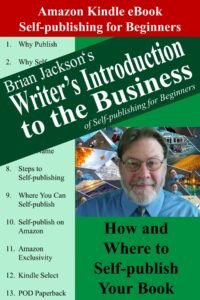At both the beginning and end of your book, you should include a section asking the reader to sign up for your mailing list. The section at the beginning of the book is to get your mailing list link in front of readers who are browsing your book while considering buying it. The section at the end of the book is to remind readers who have finished the book to sign up for your mailing list. Jump to the front of this book to see my mailing list sign up request as an example. While you’re there, click the sign-up link to view my mailing list sign up request landing page hosted by MailerLite.
Why You Need to Have a Mailing List
You may have heard the expression, “The money is in the list.” What this expression means is that there is easy money to be made by having a mailing list. Every marketing guide that you pick up will at some point express the importance of maintaining a mailing list of your customers. Well, this guide is no different in that respect.
Earlier in this book, I expressed the importance of writing a series so that you don’t let your readers get away. Well, having a mailing list is the ultimate way to not let your readers escape your grasp. When releasing new material, your mailing list will provide a ready audience who signed up to receive your book deals, read your works and leave reviews.
Besides that, many mailing lists are free and easy to setup and maintain – at least the ones I’ll be writing about.
If you already have a mailing list, promote it in the front and back of all your books. If you don’t, keep reading to learn more.
What Is a Mailing List Server, Anyway?
A mailing list server is a company with a lot of computing power in the back closet that has been certified to send out a lot of email without having it considered spam. Such companies provide web-based interfaces, kind of like KDP, that can be used to create sign up forms for mailing lists maintained on their servers. Customers can easily send email campaigns to their lists after segmenting their lists into interest groups and even automate mailing to individual email addresses using automation. Email automation is one of the most powerful features of these mailing lists allowing a writer to send emails spaced out a number of days from signing up in addition to email campaigns.
I use email campaigns to announce new material when it becomes available and automated email sequences to run subscribers through a standard course of my backlist of material. The combination of email campaigns and automated email sequences is a powerful way to keep readers informed of your activity and to drum up sales.
How to Use Your Mailing List for Book Promotion
The first rule of sending an email to a mailing list is to be helpful to your readers. A general rule of thumb is to send 80% informational email to 20% sales email. For instance, I have a mailing list for this book series. I should be sending the bulk of my email to provide additional tips and experience from the trenches regarding self-publishing. Even the sales emails that I send should be couched in educational terms. So, the first rule is to be helpful and informative rather than constantly selling.
The other thing that you need to consider is how frequently you will send emails to your list. My general rule of thumb is to send no more than two emails per week, though I actually prefer to send only one. What I recommend is that you schedule one weekly automated email and reserve your second email to announce the release of new material and promotions. Such a schedule should produce about one and a half emails per week – perfect!
So, what helpful and informative information should you share? How about:
- Helpful tips and tricks.
- Product and book reviews.
- Information about how you write your books.
- Interesting stories from your life.
- Background on characters and places from your books.
- Recent great meals and gatherings you’ve had – include pictures if possible.
- Funny stories.
Basically, you should send email to your readers as if you’re talking with a friend. Try to establish a rapport with your readers so that they grow to look forward to hearing from you. And occasionally slip in a book marketing reference.


















